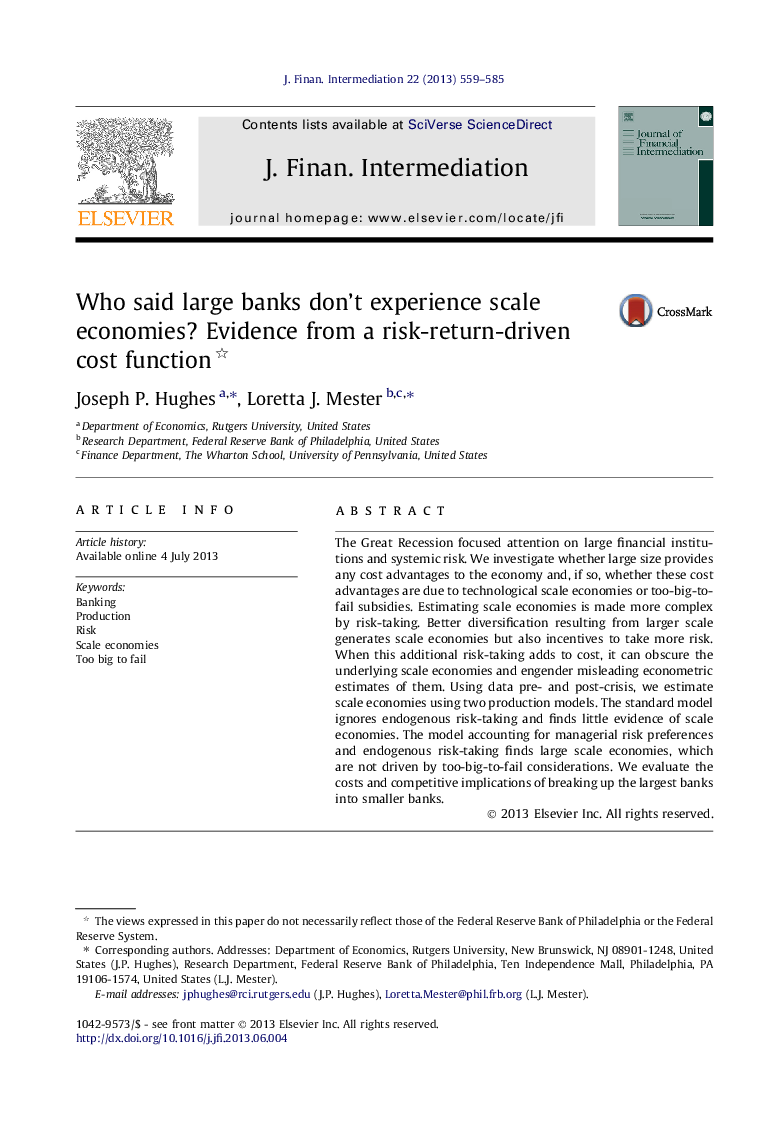| Article ID | Journal | Published Year | Pages | File Type |
|---|---|---|---|---|
| 961007 | Journal of Financial Intermediation | 2013 | 27 Pages |
Abstract
The Great Recession focused attention on large financial institutions and systemic risk. We investigate whether large size provides any cost advantages to the economy and, if so, whether these cost advantages are due to technological scale economies or too-big-to-fail subsidies. Estimating scale economies is made more complex by risk-taking. Better diversification resulting from larger scale generates scale economies but also incentives to take more risk. When this additional risk-taking adds to cost, it can obscure the underlying scale economies and engender misleading econometric estimates of them. Using data pre- and post-crisis, we estimate scale economies using two production models. The standard model ignores endogenous risk-taking and finds little evidence of scale economies. The model accounting for managerial risk preferences and endogenous risk-taking finds large scale economies, which are not driven by too-big-to-fail considerations. We evaluate the costs and competitive implications of breaking up the largest banks into smaller banks.
Related Topics
Social Sciences and Humanities
Business, Management and Accounting
Strategy and Management
Authors
Joseph P. Hughes, Loretta J. Mester,
